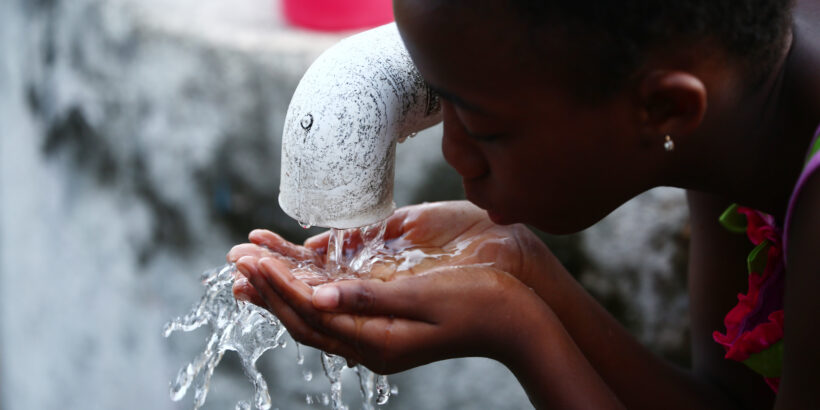Healthy families and communities rely on safe water, sanitation, and hygiene (WASH) systems for daily health and wellness needs; yet this essential disease prevention infrastructure is too frequently disconnected from global health conversations. Today, in honor of World Water Day, we review the impact of WASH on health, with a focus on “accelerating change.” Integrating WASH with other health interventions, including vaccines, leads to improvements in disease control and overall wellbeing.
The nexus of health and WASH
Improved WASH systems—and access to them—are crucial to the prevention and control of a myriad of diseases, including typhoid. Typhoid is directly linked to unsafe water and inadequate sanitation and is transmitted via the fecal-oral route. This means that typhoid-causing bacteria can enter a person’s system through consuming contaminated food or water, or interacting with contaminated hands or objects. Access to appropriate WASH facilities limits the transmission of these pathogens. They are one of the most cost-effective methods of disease prevention.
Unfortunately, millions of people across the globe continue to lack access to WASH, which leaves them vulnerable to preventable diseases. Globally, 600 million children lack access to clean drinking water, 1.1 billion do not have safely managed sanitation, 698 million are without basic hygiene services, and 149 million practice open defecation. Each day, unsafe WASH practices are responsible for an estimated 1,000 deaths in children younger than 5 years old.
Together, WASH and vaccines are an integrated approach that can stop the spread of typhoid and other infectious diseases. For typhoid, this approach also reduces the transmission and further spread of drug-resistant typhoid bacteria.
WASH and vaccine resources
As decision-makers weigh the costs of various public solutions, data and information to support WASH and vaccine interventions are crucial. Clear and consistent messaging helps communicate the urgent need to take action to reduce transmission of diseases such as typhoid. The following globally available materials help articulate the problem, urgency, and the WASH and vaccine solutions to take on typhoid.
- The TCV+ WASH brief outlines the importance of combining typhoid conjugate vaccines (TCV) with WASH systems in hard-to-reach, high-risk communities.
- The TCV policy brief contains information about drug resistance, climate change, rapid urbanization, and the urgency to address typhoid through an integrated approach.
- According to the WHO Position Paper, vaccination efforts should be combined with improvements in WASH systems, strengthened surveillance, health and disease education, and appropriate use of antibiotics to reduce the burden of typhoid in endemic countries.
- View the Typhoid and safe water, sanitation, and hygiene webpage for more information on the role of preventative vaccines alongside improved WASH interventions.
- A recent study in Mirpur, Bangladesh examined the effect of combined WASH and TCV interventions on reducing the risk of typhoid.
- Many families, including the stories highlighted in “The value of water in the fight to take on typhoid,” are forced to depend on contaminated water sources. This leaves them vulnerable to waterborne diseases such as typhoid.
- Decision-makers must consider the proven impact of climate change on the acceleration of typhoid transmission from overburdened WASH systems during times of floods, as outlined in the TCV+ climate change brief.
Cover photo: A child drinks water from a handpump in Liberia. PATH/Nurudeen Sanni



